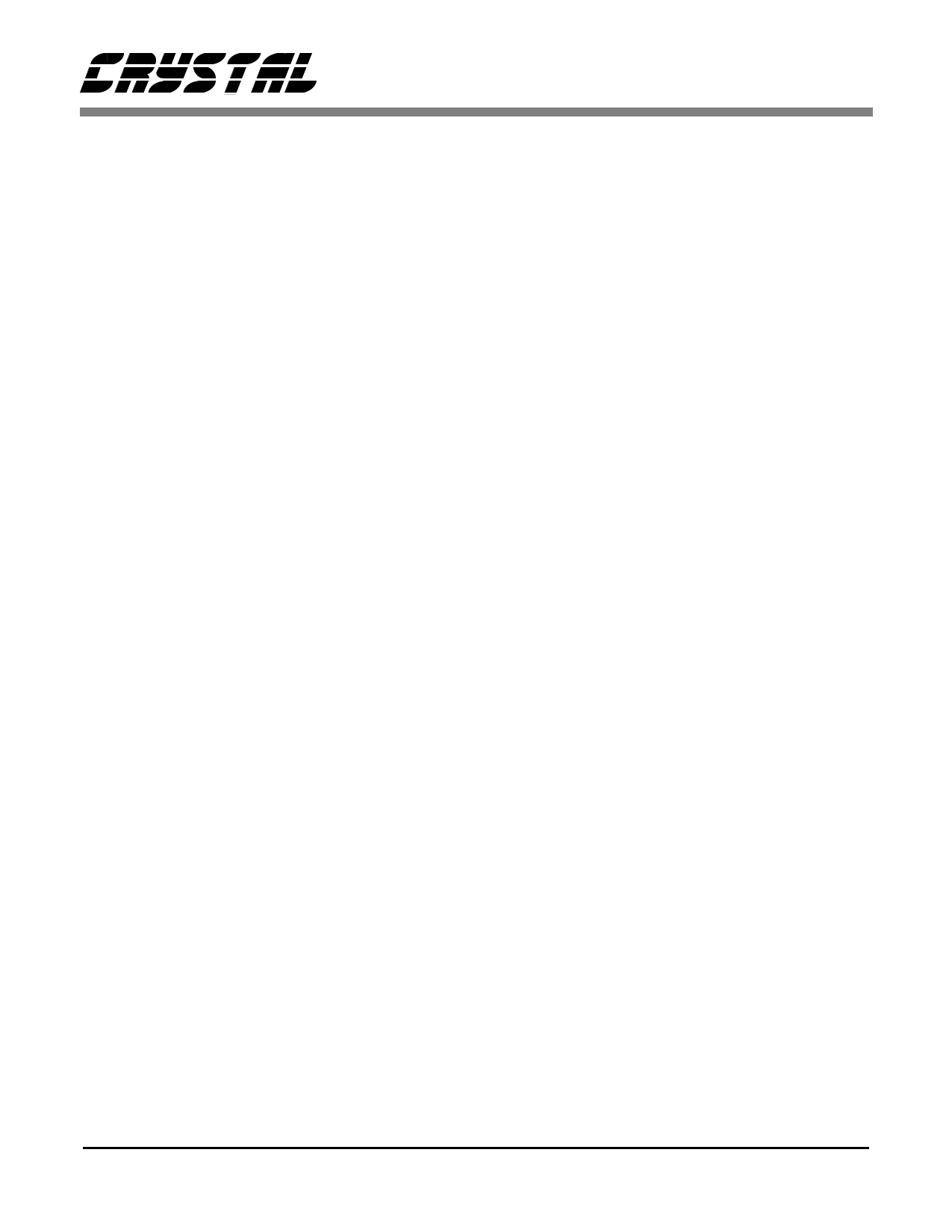CDB6420 Ver la hoja de datos (PDF) - Cirrus Logic
Número de pieza
componentes Descripción
Lista de partido
CDB6420 Datasheet PDF : 52 Pages
| |||

CS6420
are the heart of most echo canceller implementa-
tions.
The worst case situation for the CS6420 is when
parties at both ends are speaking and the person at
the near-end is moving. In this case, the echo can-
celler will cease to adapt because of the double-
talk, but the echo will not be optimally reduced be-
cause of the change in path.
Adaptive Filter
The adaptive filter in the CS6420 uses an algorithm
called the “Normalized Least-Mean-Square
(NLMS)” update algorithm to learn the echo path
transfer function. This Finite Impulse Response
(FIR) filter has 508 taps, which can model up to
63.5ms of total path response at a sampling rate of
8kHz. The coverage time is calculated by the fol-
lowing formula:
8----k--1-H-----z x 508 = 63.5 ms.
The CS6420’s adaptive filter, like all FIR filters,
only models Linear and Time Invariant (LTI) sys-
tems. So, any non-linearity in the echo path can not
be modeled by the adaptive filter and the resulting
signals will not be cancelled. Signal clipping and
poor-quality speakers are very common sources of
non-linearity and distortion.
A common integration problem for echo cancellers
is signal clipping in the echo path. For example, if
a speaker driver is driven to its rails, the distortion
of the speech may be hard to perceive, but it is very
bad for the echo canceller. This technique has been
used in half-duplex phones to provide good low-
level signal gain at the expense of distortion with
high amplitude signals. Since this does not work
for the CS6420, an AGC mechanism has been in-
troduced to provide equivalent behavior without
clipping. See the section on AGC for more details.
Another common problem is speaker quality. A
poor quality speaker which is perfectly acceptable
for a half-duplex speakerphone, may limit the echo
canceller’s performance in a full-duplex speaker-
phone. The distortion elements will not be modeled
by the adaptive filter and so limit its effectiveness.
Speakers should have better than 2% THD perfor-
mance to not impede the adaptive filter.
Volume control should be implemented only using
the CS6420 Microcontroller Interface. A real-time
external change in the gain of the speaker driver,
for example, would result in a change in the trans-
fer function of the echo path, and so would force
the adaptive filter to readapt. If the volume control
is done before the input to the adaptive filter, the
echo path does not change, and no retraining is nec-
essary. Another side benefit of the CS6420 volume
control is that it transparently provides dynamic
range compression.
Pre-Emphasis
The typical training signal for the adaptive filter
will be speech, but most adaptive filters work opti-
mally with white noise. Speech has very different
spectral characteristics than white noise because of
its quasi-periodic nature.
Research at Crystal has shown that quasi-periodic
signals cause the formation of spurious non-zero
coefficients within the adaptive filter at tap inter-
vals determined by the periodicity of the signal.
This results in small changes in period being very
destructive to the adaptive filter’s performance.
One mechanism the CS6420 uses to prevent this
filter corruption with speech is to pre-emphasize
the signal sent to the adaptive filter so that much of
the low frequency content is removed.
The CS6420 works very well with a speech training
signal because of the pre-emphasis filter. White
noise training signals, however, will result in sub-
optimal performance, so when testing, white noise
is not recommended as a training signal.
Graded Beta
The update gain of an adaptive filter, sometimes
called the “beta”, is the rate at which the filter co-
DS205PP2
23